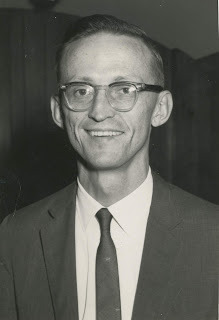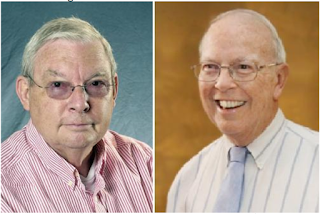The Individual in Communication Research: Part II
This is the second part of a series I'm writing, tracing the history of
how the idea of the "individual" has been understood in the history of
media research. The first part dealt with how the "individual" was theorized in the very early days of social science research, and how it evolved with the socio-political changes that occurred during the between the world wars. This section highlights the paradigmatic changes that followed in the scholarship after the second world war.
Read part 1 here.
-
The Active Audience
The role of the individual in media effects research became more prominent as the field of communication progressed. The persuasion theories of propaganda research, the “magic bullet” model, though fanciful, failed to live up to the empirical evidence that social science research continued to uncover.
In a seminal albeit controversial work, Angus Campbell, Philip Converse, and others in the University of Michigan wrote a book called The American Voter (1960). Here they afforded evidence based on some of the earliest and most comprehensive election studies done using survey data, that as far as voting behavior was concerned, individuals didn’t seem to be affected by the media at all. Around the same time, other theories were gaining ground which, unlike the persuasion theories from a few years earlier, did not hypothesize audiences to be homogenous collectives, and individuals to be passive receptors of media messages. This new line of thinking gave individuals some agency in how they dealt with messages. Attribution theory (Heider, 1958; Kelley Harold H., 1971; Weiner, 1972) for instance, thought of understanding media effects by attributing individuals with feelings, beliefs, and intentions. While these theories did not pay much attention to the social structure that individuals were embedded in, they brought into consideration the psychology and the cognition of the individuals in audiences that had previously been considered to be dispassionate and unthinking. Scholars theorized that different preexisting cognitive orientations of different individuals could lead to different levels of acceptance of media messages. Thus, two individuals were no longer equal as far as media effects were concerned, and the effect to which they were persuaded (or not), depended on their individual selves, not simply on the message. Individuals were thus part of an “active” audience (Bauer, 1971).
The Uses and Gratifications (UG) model was one of the logical descendants of the active audience theory. This framework went one step beyond attribution theory and hypothesized that individuals were not just receiving the same messages in cognitively different ways, but they were actively seeking out (or blocking out) the media messages that they wanted (Blumler & Katz, 1974; Katz, E,. Blumler, J.G., & Gurevitch, 1973). As opposed to asking what the “media does to people”, a UG approach focused on asking “what do people do with media” (Katz, 1959). Yet another (albeit later) theory that focused on individual cognitions was the Elaboration Likelihood Model (Petty & Cacioppo, 1986). In this model, persuasion and attitude change is a deeply personal process that relies on the individual’s ability to both, think carefully and thoroughly about the information they receive, as well as rely on peripheral positive and negative cues while making an inference from the piece of information.
Off shoots of these “active audience” theories included “selective exposure theory” based on Leon Festinger’s idea of cognitive dissonance (1957). According to selective exposure, individuals favor information that reinforces their preexisting views biases and avoid contradictory information that doesn’t (Sears & Freedman, 1967; Zillman & Bryant, 1985).
The theories from this period of research, and the academic turn towards “active” audiences marked an important shift in how communication scholars and social scientists theorized about the “problem of the individual”. People were no longer unthinking, emotional targets for messages. They now had the agency to bring their individuality to these messages and interpret them in a cognitively personal manner. The legacy of these theories is long lasting, and many of them (for instance, selective exposure) continue to be relevant today. However, what these theories still lacked was the consideration that individuals were part of a collective, and that how messages affect individuals depends not just on the messages, or the individuals themselves, but also on the fact that these individuals were embedded in a certain societal structure. And this is where the next phase of communication research came in.
Read part 3 here.
-
References
Bauer, R. A. (1971). The Obstinate Audience. The Process and Effects of Mass Communication, (April), 326–346.
Blumler, J. G., & Katz, E. (1974). The Uses of Mass Communications: Current Perspectives on Gratifications Research. Sage Annual Reviews of Communication Research Volume III.
Campbell, A., Converse, P. E., Miller, W. E., & Stokes, D. E. (1960). The American Voter. New York: Wiley.
Festinger, L. (1957). A theory of cognitive dissonance. Scientific American.
Heider, F. (1958). The psychology of interpersonal relations. Erlbaum.
Katz, E,. Blumler, J.G., & Gurevitch, M. (1973). Uses and Gratifications Research. Public Opinion Quarterly, 37(4), 509–523.
Katz, E. (1959). Mass Communications Research and the Study of Popular Culture : An Editorial Note on a Possible Future for This Journal Mass Communications Research and the Study of Popular Culture : An. Studies in Public Communication, 2, 1–6. Retrieved from http://repository.upenn.edu/asc_papers%0Ahttp://repository.upenn.edu/asc_papers/165%0Ahttp://repository.upenn.edu/asc_papers/165/
Kelley Harold H. (1971). Attribution in Social Interaction.
Petty, R. E., & Cacioppo, J. T. (1986). The elaboration likelihood model of persuasion. Advances in Experimental Social Psychology, 19(C), 123–205.
Sears, D., & Freedman, J. (1967). Selective Exposure to Information : A Critical Review. The Public Opinion Quarterly, 31(2), 194–213.
Weiner, B. (1972). Attribution theory, achievement motivation, and educational process. Review of Educational Research, 42(2), 203–215.
Zillman, D., & Bryant. (1985). Selective Exposure To Communication. Routledge.
Read part 1 here.
-
The Active Audience
The role of the individual in media effects research became more prominent as the field of communication progressed. The persuasion theories of propaganda research, the “magic bullet” model, though fanciful, failed to live up to the empirical evidence that social science research continued to uncover.
 |
| Philip Converse Source: https://aadl.org/aa_news_phillip_converse |
The Uses and Gratifications (UG) model was one of the logical descendants of the active audience theory. This framework went one step beyond attribution theory and hypothesized that individuals were not just receiving the same messages in cognitively different ways, but they were actively seeking out (or blocking out) the media messages that they wanted (Blumler & Katz, 1974; Katz, E,. Blumler, J.G., & Gurevitch, 1973). As opposed to asking what the “media does to people”, a UG approach focused on asking “what do people do with media” (Katz, 1959). Yet another (albeit later) theory that focused on individual cognitions was the Elaboration Likelihood Model (Petty & Cacioppo, 1986). In this model, persuasion and attitude change is a deeply personal process that relies on the individual’s ability to both, think carefully and thoroughly about the information they receive, as well as rely on peripheral positive and negative cues while making an inference from the piece of information.
 |
| Elihu Katz source: https://www.asc.upenn.edu/news-events/news/personal-influence-elihu-katz |
Off shoots of these “active audience” theories included “selective exposure theory” based on Leon Festinger’s idea of cognitive dissonance (1957). According to selective exposure, individuals favor information that reinforces their preexisting views biases and avoid contradictory information that doesn’t (Sears & Freedman, 1967; Zillman & Bryant, 1985).
The theories from this period of research, and the academic turn towards “active” audiences marked an important shift in how communication scholars and social scientists theorized about the “problem of the individual”. People were no longer unthinking, emotional targets for messages. They now had the agency to bring their individuality to these messages and interpret them in a cognitively personal manner. The legacy of these theories is long lasting, and many of them (for instance, selective exposure) continue to be relevant today. However, what these theories still lacked was the consideration that individuals were part of a collective, and that how messages affect individuals depends not just on the messages, or the individuals themselves, but also on the fact that these individuals were embedded in a certain societal structure. And this is where the next phase of communication research came in.
Read part 3 here.
-
References
Bauer, R. A. (1971). The Obstinate Audience. The Process and Effects of Mass Communication, (April), 326–346.
Blumler, J. G., & Katz, E. (1974). The Uses of Mass Communications: Current Perspectives on Gratifications Research. Sage Annual Reviews of Communication Research Volume III.
Campbell, A., Converse, P. E., Miller, W. E., & Stokes, D. E. (1960). The American Voter. New York: Wiley.
Festinger, L. (1957). A theory of cognitive dissonance. Scientific American.
Heider, F. (1958). The psychology of interpersonal relations. Erlbaum.
Katz, E,. Blumler, J.G., & Gurevitch, M. (1973). Uses and Gratifications Research. Public Opinion Quarterly, 37(4), 509–523.
Katz, E. (1959). Mass Communications Research and the Study of Popular Culture : An Editorial Note on a Possible Future for This Journal Mass Communications Research and the Study of Popular Culture : An. Studies in Public Communication, 2, 1–6. Retrieved from http://repository.upenn.edu/asc_papers%0Ahttp://repository.upenn.edu/asc_papers/165%0Ahttp://repository.upenn.edu/asc_papers/165/
Kelley Harold H. (1971). Attribution in Social Interaction.
Petty, R. E., & Cacioppo, J. T. (1986). The elaboration likelihood model of persuasion. Advances in Experimental Social Psychology, 19(C), 123–205.
Sears, D., & Freedman, J. (1967). Selective Exposure to Information : A Critical Review. The Public Opinion Quarterly, 31(2), 194–213.
Weiner, B. (1972). Attribution theory, achievement motivation, and educational process. Review of Educational Research, 42(2), 203–215.
Zillman, D., & Bryant. (1985). Selective Exposure To Communication. Routledge.


Comments